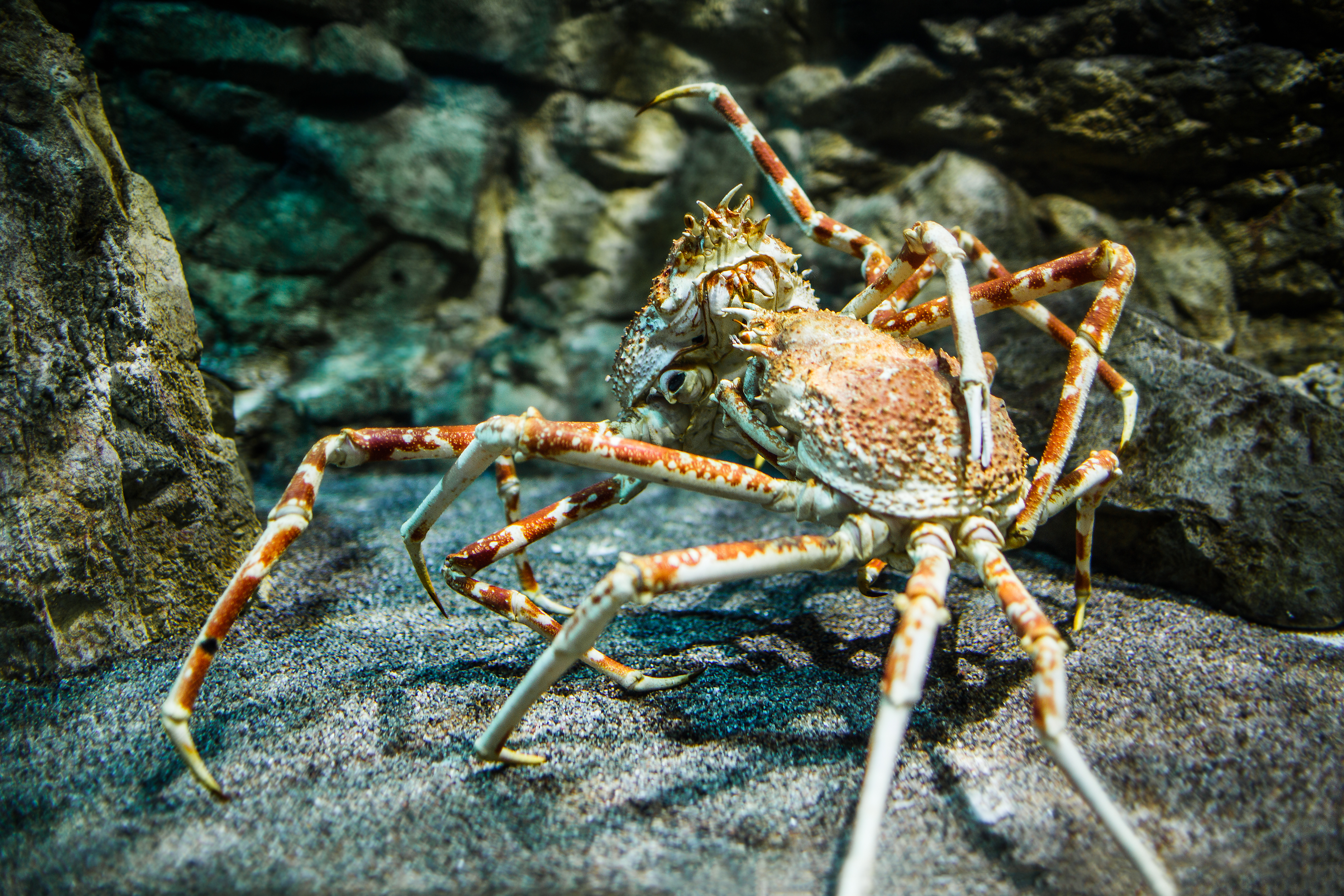Spider crab is a crab with eight long, thin legs for walking. It has two other legs with claws for eating. The crab often somewhat resembles a spider. However, spider crabs are not closely related to spiders. Like all crabs, they are crustaceans, a type of animal that also includes lobsters and shrimp. There are many different species (kinds) of spider crab.

Spider crabs are found around the world. They live in both warm and cold waters. They spend most of their lives on the ocean floor. Many spider crabs live in deep water. But they may come to shallow water to lay eggs. For reasons scientists do not understand, spider crabs sometimes gather in large groups numbering in the hundreds.
The largest crab in the ocean is the Japanese spider crab. It can reach 12 feet (3.7 meters) across, including the legs. A spider cab can weigh as much as 45 pounds (20.4 kilograms).
Spider crabs feed on slow moving and dead fish, jellyfish, and many kinds of mollusks (shellfish). They are eaten by octopuses and large halibut. Human beings also eat some species of spider crabs, including the Japanese spider crab. The snow crab and the Tanner crab are harvested in Alaska. These spider crab species make up an important commercial fishery.
Some adult male spider crabs have one long, wide claw. This claw helps them to guard females during reproduction. Females lay from 10,000 to 100,000 eggs, depending on the species. The eggs hatch in 3 to 11 months, depending on the water temperature. The larvae (young) drift with the currents for about a month before settling to the ocean floor. They typically take five to seven years to become adults.
